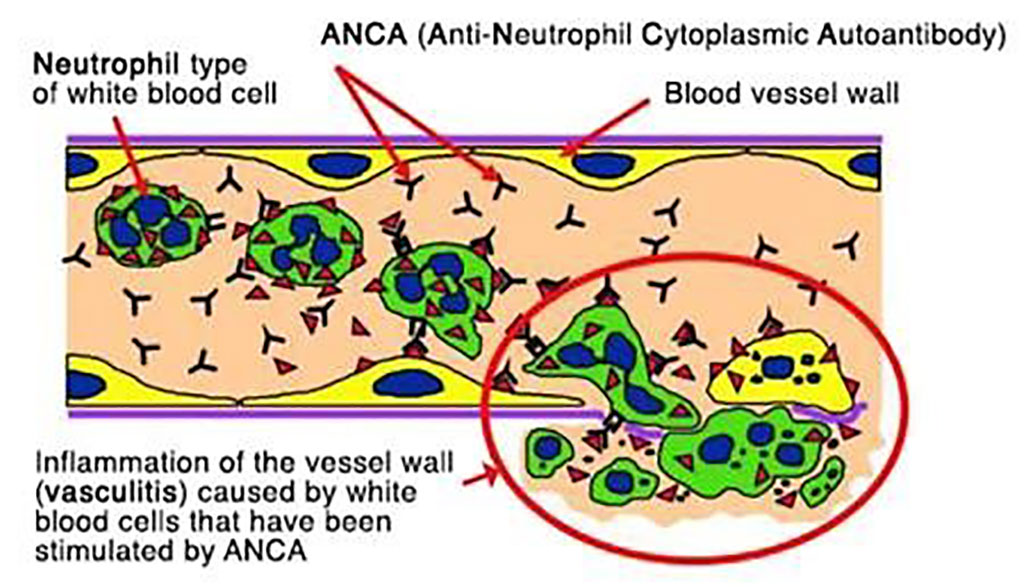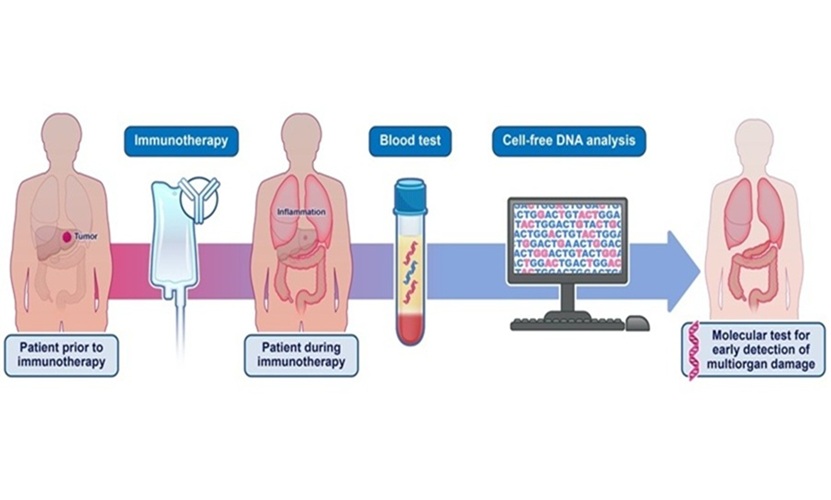Serum Progranulin Predicts High Activity of ANCA-Associated Vasculitis
By LabMedica International staff writers
Posted on 18 Oct 2021
Anti-Neutrophil cytoplasmic antibody (ANCA)-associated vasculitis (AAV) is a group of chronic multisystem autoimmune diseases with substantial mortality and morbidity and frequent relapses. Progranulin is known to assume both pro-inflammatory roles and anti-inflammatory roles in the immune response.Posted on 18 Oct 2021
The complexity of the disease condition and treatment-related adverse reactions as well as infections plays important roles in the poor outcomes. Unfortunately, the subjective symptoms and objective indicators are not fully parallel, and manifestations between disease activity and treatment-related adverse reactions are often similar.

Image: Schematic diagram showing Anti-Neutrophil cytoplasmic antibody ANCA-induced ‘activation’ of neutrophils causing inflammation of the blood vessel wall (Photo courtesy of Addenbrooke’s Hospital)
Medical Scientists at the Yonsei University College of Medicine (Seoul, Republic of Korea) selected 58 AAV patients with consecutive hospital identity numbers and were first diagnosed with AAV at their hospital between January 2019 and December 2020. Data regarding age, sex, AAV subtypes, ANCAs, and organ involvement were collected from patients during the visit for blood sample collection. The laboratory data, white blood cell and platelet counts, erythrocyte sedimentation rate (ESR), C-reactive protein (CRP), hemoglobin, glucose, blood urea nitrogen, serum creatinine, total protein, serum albumin, and complements 3 and 4 were collected. Serum progranulin concentration was quantified by ELISA kits (R&D Systems, Minneapolis, MN, USA).
The investigators reported that the median age of patients was 63.0 years and 19 were men. The median BVAS was 11.0, and the median serum progranulin level was 49.0 ng/mL. Serum progranulin was significantly correlated with Birmingham Vasculitis activity score (BVAS), Five-Factor Score (FFS), erythrocyte sedimentation rate, C-reactive protein level, SF-36 PCS, hemoglobin, and serum albumin. Severe AAV was arbitrarily defined as the highest tertile of BVAS (BVAS ≥16). When the cut-offs of serum progranulin were set as 55.2 ng/mL and 43.01 ng/mL for severe AAV, AAV patients with serum progranulin ≥55.2 and 43.01 ng/mL had significantly higher risks of severe AAV than those without (relative risk (RR) 4.167 and 4.524, respectively).
The authors concluded that progranulin might play an anti-inflammatory role in AAV pathogenesis and serum progranulin could be used as a predictive marker for high activity of AAV. The study was published on October 9, 2021 in the Journal of Clinical Laboratory Analysis.
Related Links:
Yonsei University College of Medicine
R&D Systems














